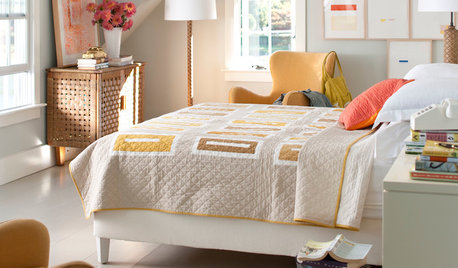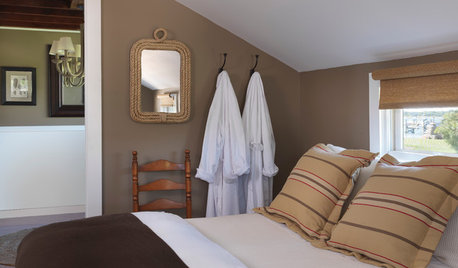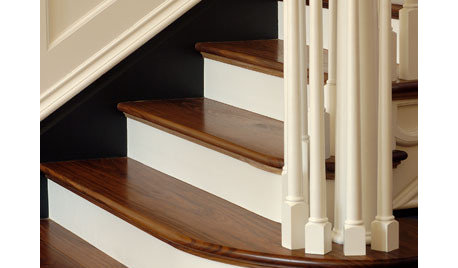how do i install a diode for dual doorbell button 2 Story House
gt78
14 years ago
Related Stories

HOUZZ TV FAVORITESHouzz TV: Beyond the Ghost Stories of the Winchester Mystery House
Supernatural tales swirl around this perplexing Victorian mansion, but early home tech is the real marvel. See it for yourself
Full Story
BATHROOM DESIGNShould You Install a Urinal at Home?
Wall-mounted pit stops are handy in more than just man caves — and they can look better than you might think
Full Story
PETSDealing With Pet Messes: An Animal Lover's Story
Cat and dog hair, tracked-in mud, scratched floors ... see how one pet guardian learned to cope and to focus on the love
Full Story
KITCHEN COUNTERTOPSWalk Through a Granite Countertop Installation — Showroom to Finish
Learn exactly what to expect during a granite installation and how to maximize your investment
Full Story
DOORS5 Questions to Ask Before Installing a Barn Door
Find out whether that barn door you love is the right solution for your space
Full Story
BEDROOMSBedtime Stories: Should You Get a Quilt, Duvet, Coverlet or Bedspread?
In this detailed guide, learn about the choices you have for covering your bed
Full Story
BEDROOMSBedtime Stories: Dress Your Guest Room to Impress
Use this 12-item checklist to make your overnight guests feel like royalty
Full Story
WORKING WITH PROSWhat to Know About Installing Recessed Lighting
Find out what can-light installation costs, how long it takes and what types of lights would work for your home
Full Story
DESIGNING A BUSINESSHow to Make Sure Your Project Installations Go Smoothly
Interior design coach Beth Whitlinger breaks down the do’s and don’ts of a successful installation process
Full StoryMore Discussions








pharkus
gardurnit
Related Professionals
Markham Electricians · Country Club Hills General Contractors · Monroe General Contractors · Rancho Cordova General Contractors · Spencer General Contractors · Universal City General Contractors · Brentwood Los Angeles Solar Energy Systems · Cheshire Solar Energy Systems · Greenville Solar Energy Systems · Richfield Solar Energy Systems · Ashburn Home Automation & Home Media · Chattanooga Home Automation & Home Media · Irvine Home Automation & Home Media · Pasadena Home Automation & Home Media · San Diego Home Automation & Home Mediagardurnit
pharkus